- Dwarf Apple Tree: Planting, Care, Pruning and Varieties – Your Complete Guide
- Introduction
- Planting
- Care
- Pruning
- Varieties
- Conclusion
- Benefits of Growing Dwarf Apple Trees
- 1. Space-saving
- 2. Easy to manage
- 3. Quick to bear fruit
- 4. High productivity
- 5. Aesthetically pleasing
- 6. Variety of options
- Choosing the Right Variety for Your Climate
- Temperature Range
- Frost Tolerance
- Chill Hours Requirement
- Disease Resistance
- Pollination
- Planting Dwarf Apple Trees
- Choosing the Right Location
- Preparing the Soil
- Planting the Tree
- Mulching and Staking
- Caring for Dwarf Apple Trees
- Caring for Dwarf Apple Trees
- Pruning and Training Techniques for Dwarf Apple Trees
- 1. Pruning to shape the tree
- 2. Pruning for fruit production
- 3. Training techniques
- 4. Timing of pruning
- 5. Maintenance pruning
- Common Pests and Diseases to Watch Out For
- Aphids
- Codling Moth
- Apple Scab
- Fire Blight
- Apple Maggot
- Harvesting and Storing Dwarf Apples
- Harvesting:
- Storing:
- Using Stored Apples:
- Question-answer:
- Can I grow a dwarf apple tree in a small yard or balcony?
- What is the best time to plant a dwarf apple tree?
- How often should I water a dwarf apple tree?
- Do dwarf apple trees require special pruning?
- What are some popular varieties of dwarf apple trees?
- How long does it take for a dwarf apple tree to bear fruit?
- Video: How to Grow Apple Trees – Complete Growing Guide
Growing apple trees in your own backyard can be a rewarding experience, allowing you to enjoy the fresh taste and aroma of homegrown fruit. If you have limited space or prefer a more manageable tree, a dwarf apple tree may be the perfect choice for you. Dwarf apple trees have all the flavor and productivity of their full-sized counterparts, but they take up less space and are easier to care for.
When planting a dwarf apple tree, it is important to choose a suitable location that receives at least six hours of direct sunlight per day. The soil should be well-draining and rich in organic matter. Dig a hole that is twice the size of the tree’s root ball, and gently spread out the roots before placing the tree in the hole. Fill in the hole with soil, firming it gently around the base of the tree.
Caring for a dwarf apple tree involves regular watering, especially during dry periods, to ensure the tree’s roots stay hydrated and the fruit develops properly. Mulching around the base of the tree can help conserve moisture and suppress weed growth. Pruning is also an important part of maintaining a healthy dwarf apple tree. Remove any dead or diseased branches, as well as any branches that are crossing or rubbing against each other. This will improve air circulation and reduce the risk of fungal diseases.
There are many different varieties of dwarf apple trees to choose from, each with its own unique characteristics. Some popular varieties include Cox’s Orange Pippin, Golden Delicious, Granny Smith, and Gala. Consider the flavor, texture, and size of the fruit when choosing a variety, as well as the tree’s disease resistance and pollination requirements.
In conclusion, a dwarf apple tree is a great option for those who want to grow their own apples but have limited space or prefer a more manageable tree. By planting in a suitable location, providing regular care and maintenance, and selecting the right variety, you can enjoy the taste of fresh, homegrown apples right in your own backyard.
Dwarf Apple Tree: Planting, Care, Pruning and Varieties – Your Complete Guide
Introduction
The dwarf apple tree is a small variety of apple tree that is perfect for the home garden. It is known for its compact size, making it suitable for small spaces like patios, balconies, or even indoor cultivation. In this guide, we will provide you with all the information you need to plant, care for, prune, and choose from different varieties of dwarf apple trees.
Planting
When planting a dwarf apple tree, follow these steps:
- Choose a suitable location with full sun exposure and well-drained soil.
- Dig a hole that is twice as wide and deep as the root ball of the tree.
- Place the tree in the hole, making sure the graft union is above the soil level.
- Backfill the hole with a mixture of soil and compost, firming it gently around the roots.
- Water the tree thoroughly after planting and add a layer of mulch around the base to retain moisture.
Care
To ensure the healthy growth of your dwarf apple tree, follow these care guidelines:
- Water the tree regularly, especially during dry spells.
- Fertilize the tree in early spring and again in summer using a balanced fertilizer.
- Prune the tree in late winter or early spring to remove dead, damaged, or crossing branches.
- Thin the fruit in early summer to improve the quality of the remaining apples.
- Protect the tree from pests and diseases by monitoring regularly and using appropriate treatments.
Pruning
Pruning is an important aspect of maintaining a healthy and productive dwarf apple tree. Here are some pruning tips:
- Remove any dead, damaged, or diseased wood.
- Thin out crowded branches to improve air circulation and sunlight penetration.
- Prune back vigorous branches to maintain a compact shape.
- Remove any water sprouts or suckers that emerge from the base of the tree.
Varieties
There are many different varieties of dwarf apple trees to choose from, each with its own unique characteristics. Some popular varieties include:
| Variety | Taste | Size |
|---|---|---|
| Gala | Sweet and crisp | Medium |
| Granny Smith | Tart and tangy | Medium |
| Golden Delicious | Sweet and mellow | Medium |
| Red Delicious | Sweet and juicy | Medium |
Choose a variety that suits your taste preferences and the climate conditions of your area.
Conclusion
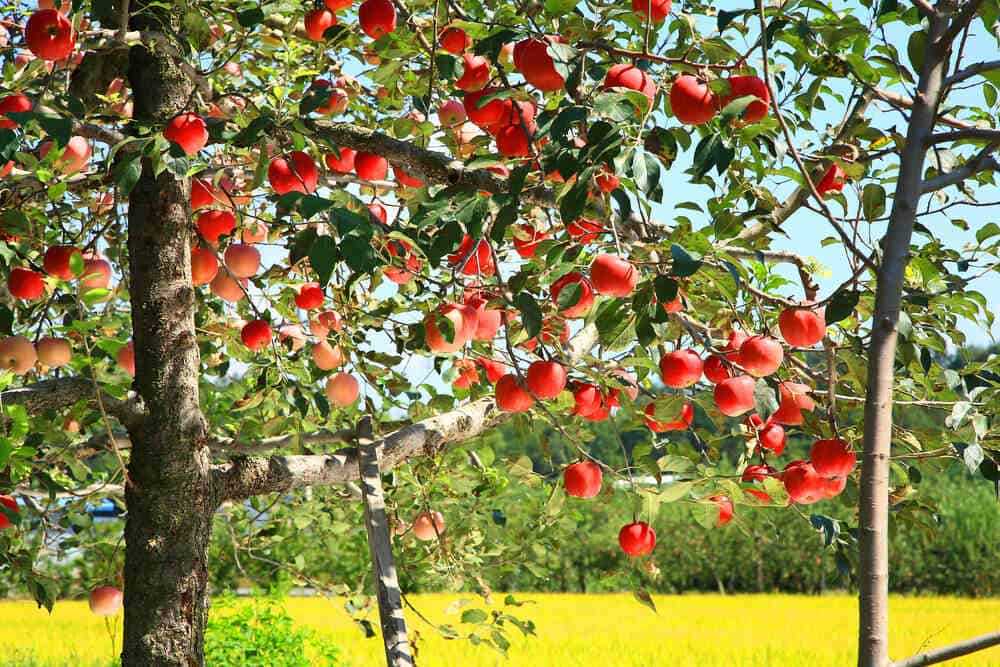
The dwarf apple tree is a great addition to any home garden, providing fresh and delicious apples in a compact and manageable size. By following the planting, care, and pruning techniques outlined in this guide, you can enjoy a bountiful harvest from your dwarf apple tree for years to come.
Benefits of Growing Dwarf Apple Trees
Growing dwarf apple trees has become increasingly popular among homeowners and gardeners. These compact trees offer a range of benefits, making them a great choice for those with limited space or who simply prefer smaller, more manageable trees. Here are some of the key advantages of growing dwarf apple trees:
1. Space-saving
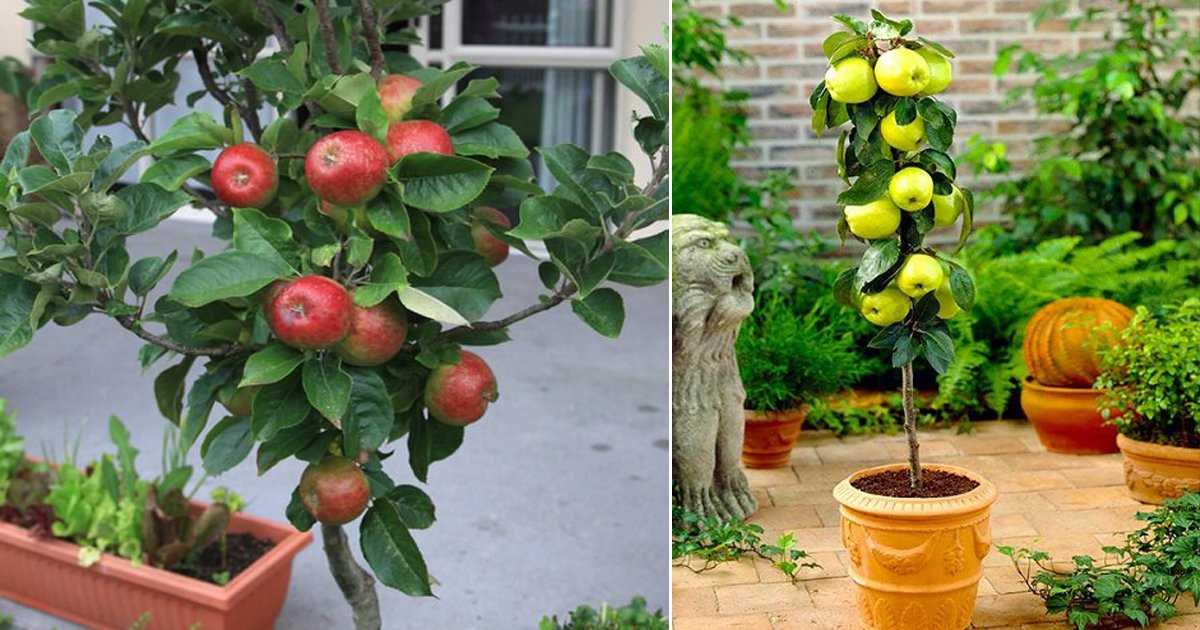
Dwarf apple trees are much smaller than standard apple trees, typically reaching a height of only 6 to 8 feet. This makes them ideal for small gardens, patios, or even balconies. With a dwarf apple tree, you can enjoy the beauty and productivity of an apple tree without taking up too much space.
2. Easy to manage
Because of their smaller size, dwarf apple trees are much easier to manage and maintain compared to standard apple trees. Pruning, watering, and harvesting can all be done from ground level, eliminating the need for ladders or high-reaching tools. This makes caring for a dwarf apple tree more convenient and less labor-intensive.
3. Quick to bear fruit
Dwarf apple trees typically start to bear fruit earlier compared to their standard-sized counterparts. This means you can enjoy a harvest of delicious apples sooner, often within the first year or two of planting. It’s a great option for those who want to enjoy homegrown apples without waiting for years.
4. High productivity
Despite their small size, dwarf apple trees can be remarkably productive. With proper care and maintenance, you can expect a bountiful harvest of apples each year. This makes them a great choice for those who love fresh, homegrown fruit but don’t have the space for a full-sized orchard.
5. Aesthetically pleasing
Dwarf apple trees offer a charming and picturesque addition to any garden or landscape. Their compact size and attractive foliage make them a visually appealing choice. In addition, they can be easily grown in containers, allowing for flexibility in placement and arrangement.
6. Variety of options
There are numerous varieties of dwarf apple trees available, offering a wide range of flavors, colors, and textures. This allows you to choose the perfect variety to suit your tastes and preferences. Whether you prefer crisp and tart apples or sweet and juicy ones, there is a dwarf apple tree variety that will meet your expectations.
In conclusion, growing dwarf apple trees is a fantastic option for individuals with limited space or those who prefer smaller, more manageable fruit trees. With their space-saving nature, ease of care, early fruiting, high productivity, aesthetic appeal, and variety of options, dwarf apple trees offer numerous advantages for gardeners and homeowners.
Choosing the Right Variety for Your Climate
When it comes to growing dwarf apple trees, choosing the right variety for your climate is crucial for their successful development and production. Different apple tree varieties have different requirements when it comes to temperature, frost tolerance, and chill hours. Here are some important factors to consider when selecting the right variety for your climate:
Temperature Range
Dwarf apple trees thrive in different temperature ranges depending on the variety. Some varieties can tolerate colder temperatures, while others require milder climates. It’s essential to choose a variety that can withstand the low temperatures typical of your region to prevent frost damage and ensure healthy growth.
Frost Tolerance
Frost can be a major issue for apple trees, especially during the blossoming period. Some apple tree varieties are more frost-tolerant than others, which means they can handle lower temperatures without suffering significant damage. If you live in an area prone to late frosts, selecting a frost-tolerant variety is crucial to protect your tree and ensure a successful fruit set.
Chill Hours Requirement
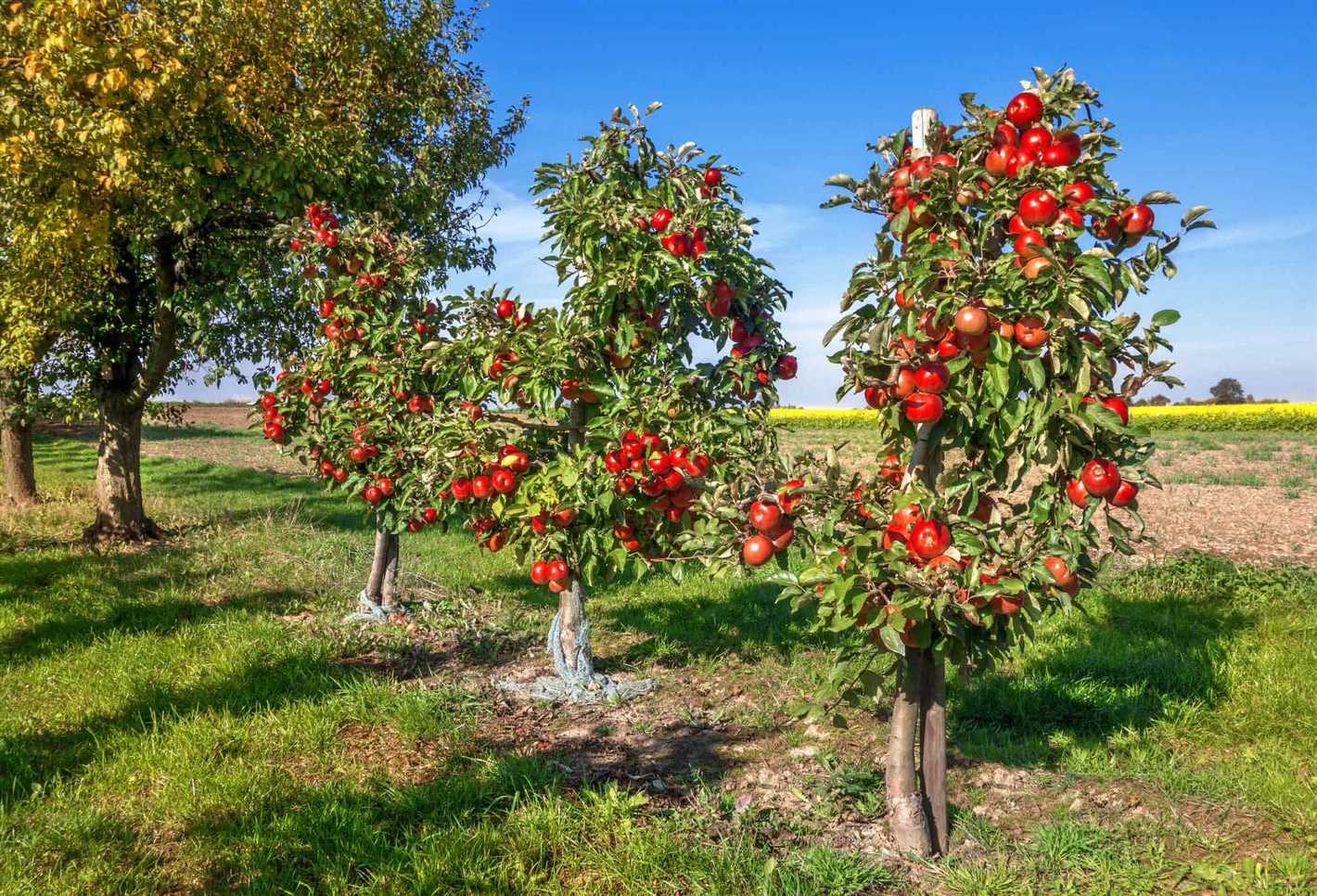
Chill hours are the number of hours below a certain temperature threshold required for proper fruit development. Different apple tree varieties have different chill hour requirements, usually ranging from 100 to 1,000 hours. It’s crucial to choose a variety that matches the average number of chill hours in your region to ensure that your tree receives the necessary cold period for optimal fruit production.
Disease Resistance
Apple trees can be susceptible to various diseases, such as apple scab or fire blight. Some apple tree varieties are more resistant to certain diseases, making them a better choice for regions where these diseases are prevalent. Consider the common diseases in your area and select a variety with a high level of resistance to ensure healthy tree growth and minimize the need for chemical treatments.
Pollination
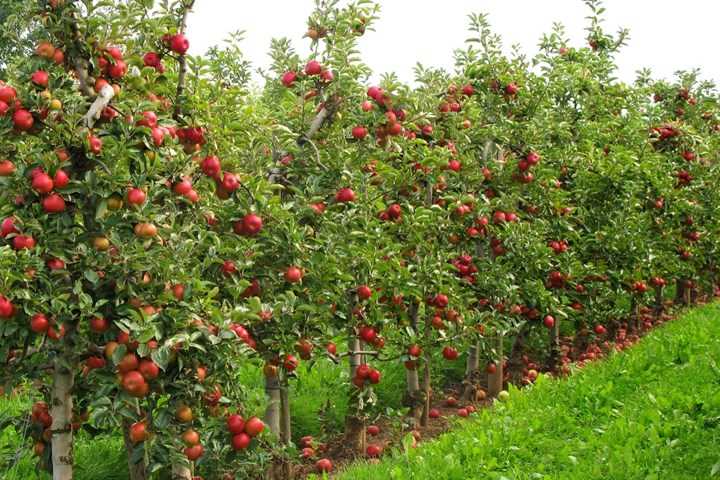
Apple trees require cross-pollination with another compatible variety to produce fruit. Some apple tree varieties are self-fertile, meaning they can produce fruit without the need for another variety. Others are self-unfruitful and require a different apple tree variety for pollination. Determine the pollination requirements for the apple tree varieties you are considering and ensure you have the right combination to facilitate successful fruiting.
By taking into account the temperature, frost tolerance, chill hours requirement, disease resistance, and pollination requirements, you can choose the right variety of dwarf apple tree that is well-suited to your climate. This will increase the chances of successful cultivation and ensure a bountiful harvest of delicious apples.
Planting Dwarf Apple Trees

Planting dwarf apple trees can be a rewarding experience, as they not only provide you with delicious fruits but also allow you to have apple trees in small spaces. However, proper planting techniques are crucial for the success of your trees. Here are some steps you can follow to ensure that your dwarf apple trees thrive:
Choosing the Right Location
When selecting a location for your dwarf apple trees, it’s important to consider a few factors:
- Sunlight: Apple trees require at least 6 hours of direct sunlight each day, so choose a spot that receives ample sunlight.
- Soil drainage: Apple trees prefer well-draining soil to prevent root rot. Avoid areas that are prone to waterlogging.
- Space: Ensure that there is enough space for the tree to grow, considering both the height and width of the mature tree.
Preparing the Soil
Before planting, prepare the soil by:
- Clearing the area: Remove any weeds, rocks, or debris from the planting site.
- Loosening the soil: Use a shovel or garden fork to loosen the soil to a depth of about 12-18 inches. This will help the roots penetrate easily and establish well.
- Improving drainage: If the soil has poor drainage, consider amending it with organic matter or creating raised beds to improve the drainage.
Planting the Tree
Follow these steps to plant your dwarf apple tree:
- Digging the hole: Dig a hole that is slightly wider and deeper than the root ball of the tree.
- Centering the tree: Place the tree in the center of the hole, making sure that the bud union (where the scion is grafted onto the rootstock) is 2-3 inches above the soil line.
- Backfilling: Gently backfill the hole with the loosened soil, making sure to eliminate any air pockets. Tamp the soil lightly to ensure good contact between the roots and the soil.
- Watering: Give the tree a thorough watering after planting to settle the soil around the roots.
Mulching and Staking
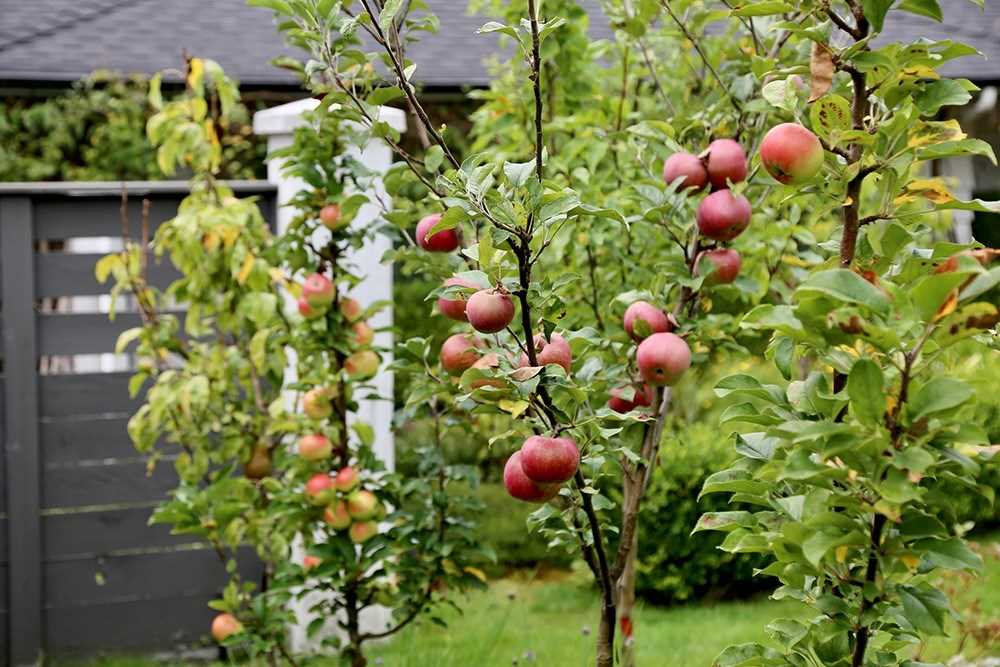
After planting, apply a layer of organic mulch around the base of the tree, leaving a 2-inch gap around the trunk. Mulching helps retain moisture, suppress weed growth, and regulate soil temperature. If necessary, stake the tree to provide support until the roots become established.
Caring for Dwarf Apple Trees
Once planted, dwarf apple trees require regular care to thrive:
- Watering: Water the tree deeply once a week, especially during dry periods. Ensure that the soil remains moist but not waterlogged.
- Fertilizing: Apply a balanced fertilizer in early spring and again in early summer to supply the necessary nutrients for healthy growth.
- Pruning: Prune your dwarf apple tree during the dormant season to remove dead or diseased branches and promote proper fruiting.
- Protecting from pests and diseases: Monitor your tree for signs of pests or diseases and take appropriate measures to control them.
By following these planting and care guidelines, you can enjoy a bountiful harvest from your dwarf apple trees for years to come.
Caring for Dwarf Apple Trees
- Choose the right location:
- Watering:
- Fertilizing:
- Pruning:
- Thinning the fruit:
- Pest and disease control:
- Harvesting:
When planting a dwarf apple tree, it is important to choose a location that receives full sun. Apple trees require at least 6 hours of direct sunlight per day to produce optimal fruit. Ensure that the location provides well-draining soil to prevent waterlogged roots.
Proper watering is crucial for the health of a dwarf apple tree. During the first year after planting, water the tree deeply once a week. In subsequent years, water the tree deeply every 10-14 days during the growing season, and reduce watering during the dormant period. Avoid overwatering, as it can lead to root rot.
Provide your dwarf apple tree with regular fertilization to promote healthy growth and fruit production. Use a balanced, slow-release fertilizer in early spring before new growth appears. Follow the manufacturer’s instructions for application rates.
Pruning is essential to maintain the shape and size of a dwarf apple tree and promote fruit production. Prune the tree in late winter or early spring before new growth starts. Remove any dead, damaged, or crossing branches. Thin out the tree to improve air circulation and reduce the risk of disease. Trim back long branches to maintain the desired size.
Thinning the fruit is necessary to prevent overcrowding and ensure that the remaining apples grow to a larger size. In early summer, when the fruit is about the size of a walnut, remove excess apples by hand, leaving one apple per cluster. Aim for spacing of about 4-6 inches between the remaining apples.
Monitor your dwarf apple tree regularly for pests and diseases. Common pests include aphids, codling moths, and apple maggots. Use organic insecticides or traps to control pests if necessary. Pay attention to signs of disease such as powdery mildew or apple scab and take appropriate measures to prevent or treat them.
Harvest the apples when they are fully mature and their color has developed. Gently twist or lift the apple upwards to detach it from the tree. Store harvested apples in a cool, dark place with good ventilation to promote longer shelf life.
Note: These care instructions are general guidelines. It is important to consult specific care recommendations for the particular variety of dwarf apple tree you are growing, as different varieties may have unique requirements.
Pruning and Training Techniques for Dwarf Apple Trees
Pruning and training are essential for the proper development and care of dwarf apple trees. By pruning and training your trees, you can improve their shape, increase their fruit production, and maintain overall tree health. Here are some pruning and training techniques to consider:
1. Pruning to shape the tree
- Remove any broken, diseased, or dead branches.
- Prune away crossing branches to create an open center or central leader shape.
- Encourage outward growth by selectively removing branches that are growing towards the center of the tree.
2. Pruning for fruit production
- Thin out excess fruit clusters to improve fruit size, quality, and prevent branches from breaking under the weight of too many fruits.
- Remove any “suckers” or water sprouts that may be growing straight up from the trunk or branches.
3. Training techniques
- Use stakes or trellises to support the tree and encourage upright growth.
- Train the branches to grow in a horizontal position, which will allow for better sunlight exposure and fruit production.
- Consider using a pruning saw or shears to make clean, precise cuts.
4. Timing of pruning
Pruning should ideally be done in late winter when the tree is dormant. This will minimize the risk of disease and allow the tree to heal quickly.
5. Maintenance pruning
- Regularly inspect your tree for any signs of disease or pests and take appropriate action.
- Remove any dead or damaged branches throughout the growing season.
- Keep the area around the tree clean and free of debris to reduce the risk of disease.
Remember, pruning is a skill that takes time and practice to master. It’s important to understand the specific needs of your dwarf apple tree and adjust your pruning techniques accordingly. By properly pruning and training your tree, you can enjoy a healthy and productive harvest for years to come.
Common Pests and Diseases to Watch Out For
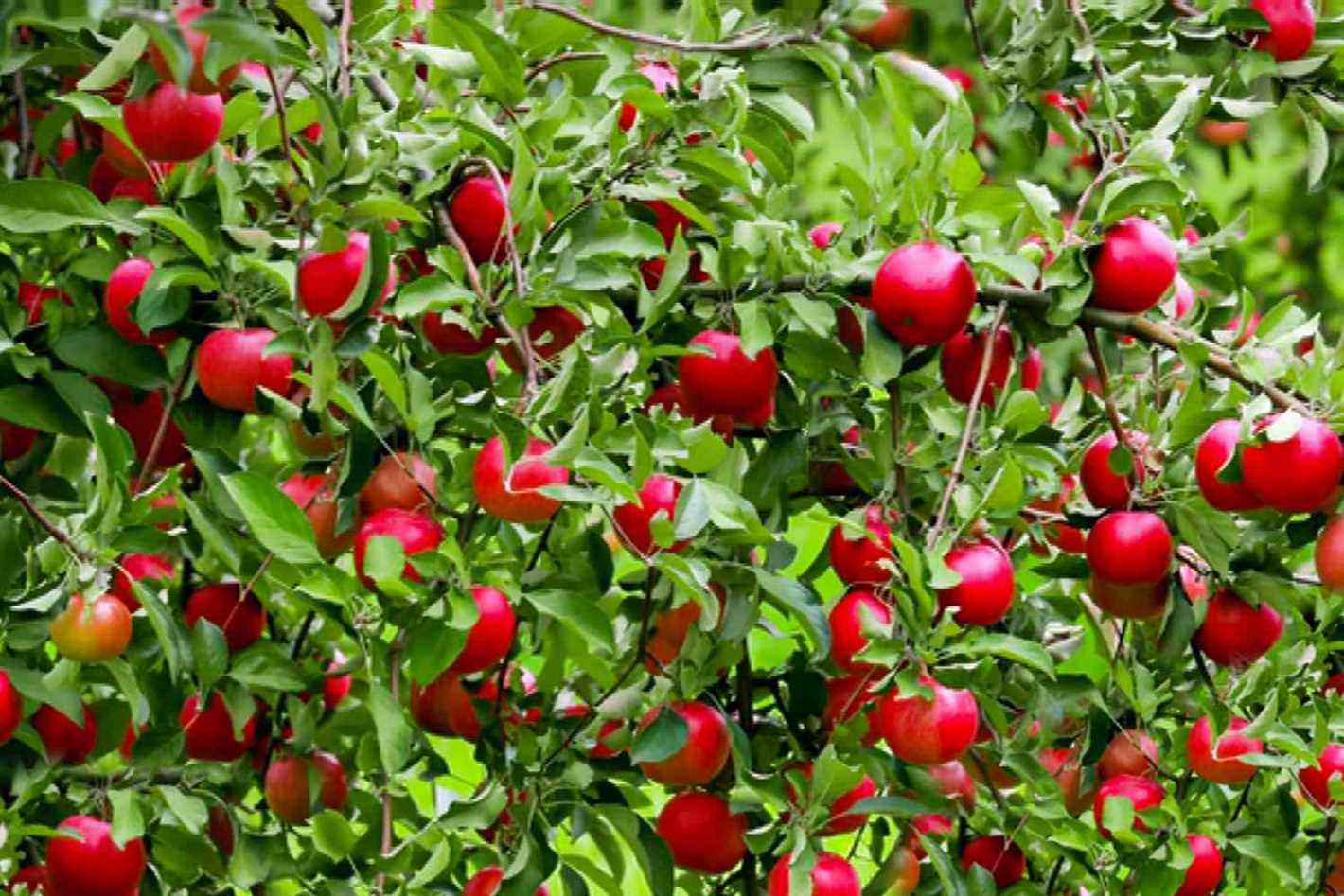
Aphids
Aphids are small insects that suck the sap from the leaves and shoots of apple trees. They can cause stunted growth, curled leaves, and a general decline in tree health. To control aphids, you can use insecticidal soap or organic insecticides.
Codling Moth
Codling moth is a major pest that affects apple trees. The larvae of this moth feed on the fruits, leaving behind characteristic brown tunnels and frass. To control codling moth, you can use pheromone traps, insecticides, or apply horticultural oil to suffocate the eggs.
Apple Scab
Apple scab is a fungal disease that causes dark, scaly lesions on the leaves, fruits, and shoots of apple trees. It can result in reduced fruit yield and poor quality fruits. To control apple scab, you should prune and remove infected plant materials, apply fungicides, and maintain good tree hygiene.
Fire Blight
Fire blight is a bacterial disease that primarily affects the blossoms, shoots, and branches of apple trees. It causes wilting and blackening of the affected plant parts, giving them a burnt appearance. To control fire blight, you should prune and remove infected branches, apply bactericides, and promote good air circulation.
Apple Maggot
Apple maggot is a pest that lays its eggs inside the fruits. The larvae then tunnel through the flesh, causing the fruits to rot and drop prematurely. To control apple maggots, you can use sticky traps, apply insecticides, or use bagging techniques to physically protect the fruits.
Harvesting and Storing Dwarf Apples
Once your dwarf apple tree starts bearing fruit, it’s time for harvest. Harvesting apples at the right time will ensure that they are ripe and have the best flavor. Here are some tips for harvesting and storing dwarf apples:
Harvesting:
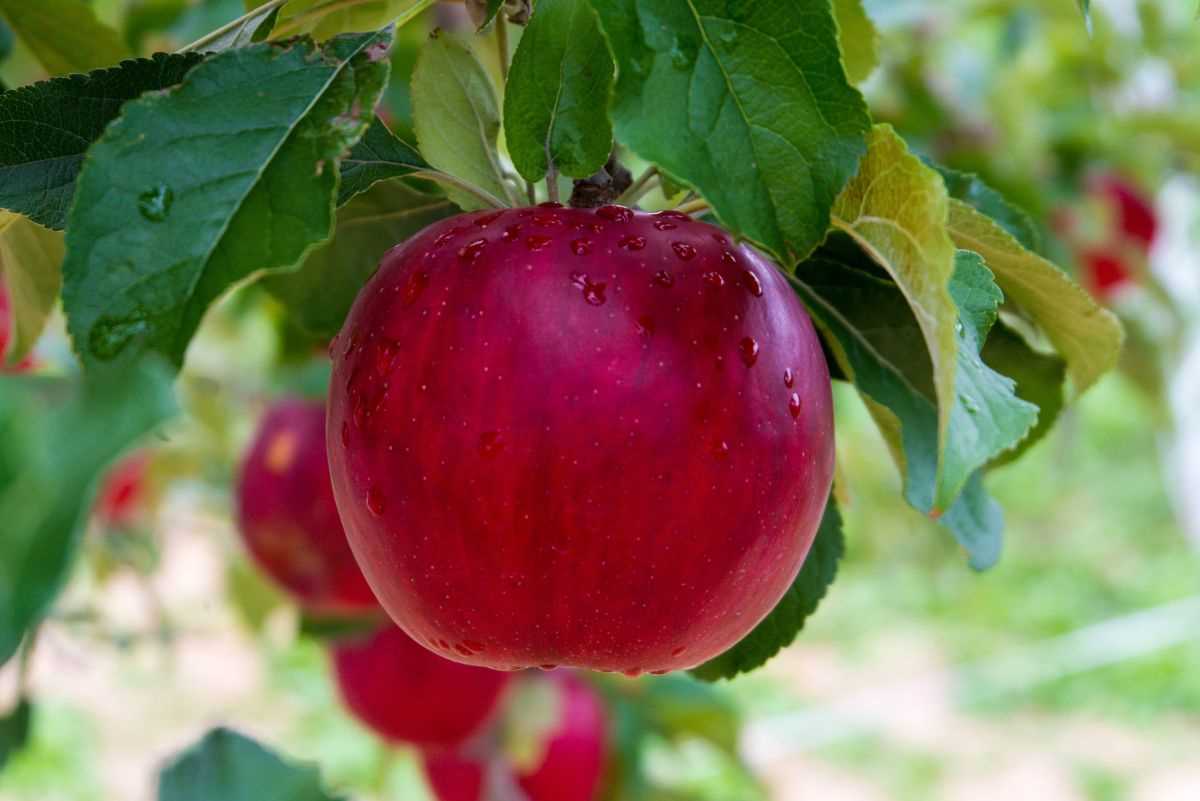
- Check the color of the apples – they should have their characteristic color for the variety.
- Give the apples a gentle twist and if they come off easily, they are ready to harvest.
- Be careful not to bruise or damage the apples while harvesting.
- Harvest the apples before the first frost, as frost can damage the fruit.
Storing:
Once harvested, it’s important to store dwarf apples properly to maximize their shelf life:
- Remove any damaged or bruised apples.
- Sort the apples by size and variety.
- Store the apples in a cool, dry place such as a root cellar, basement, or refrigerator.
- Place the apples in a single layer or in shallow containers to prevent them from touching and bruising each other.
- Avoid storing apples near other fruits or vegetables that release ethylene gas, as it can cause apples to ripen and spoil quickly.
Using Stored Apples:
Stored dwarf apples can be used in a variety of ways:
- Enjoy them fresh as a healthy snack.
- Bake them into pies, tarts, or cobblers.
- Make applesauce or apple butter.
- Use them in salads or as a topping for oatmeal or yogurt.
By following these tips for harvesting and storing dwarf apples, you can enjoy the fruits of your labor for months to come.
Question-answer:
Can I grow a dwarf apple tree in a small yard or balcony?
Yes, you can grow a dwarf apple tree in a small yard or balcony. Dwarf apple trees are specifically bred to be smaller in size, making them perfect for small spaces.
What is the best time to plant a dwarf apple tree?
The best time to plant a dwarf apple tree is in early spring or late fall. This allows the tree to establish its roots before the summer heat or winter frost.
How often should I water a dwarf apple tree?
You should water a dwarf apple tree regularly, especially during its first year of growth. The tree should be watered deeply at least once a week, and more frequently during hot, dry weather.
Do dwarf apple trees require special pruning?
Yes, dwarf apple trees require regular pruning to maintain their shape and promote fruit production. It is recommended to prune them annually during late winter or early spring when the tree is dormant.
What are some popular varieties of dwarf apple trees?
Some popular varieties of dwarf apple trees include Honeycrisp, Gala, Granny Smith, and Braeburn. These varieties are known for their delicious taste and are widely available.
How long does it take for a dwarf apple tree to bear fruit?
A dwarf apple tree can start bearing fruit within 2 to 4 years after planting. However, the exact time can vary depending on the variety and growing conditions.







